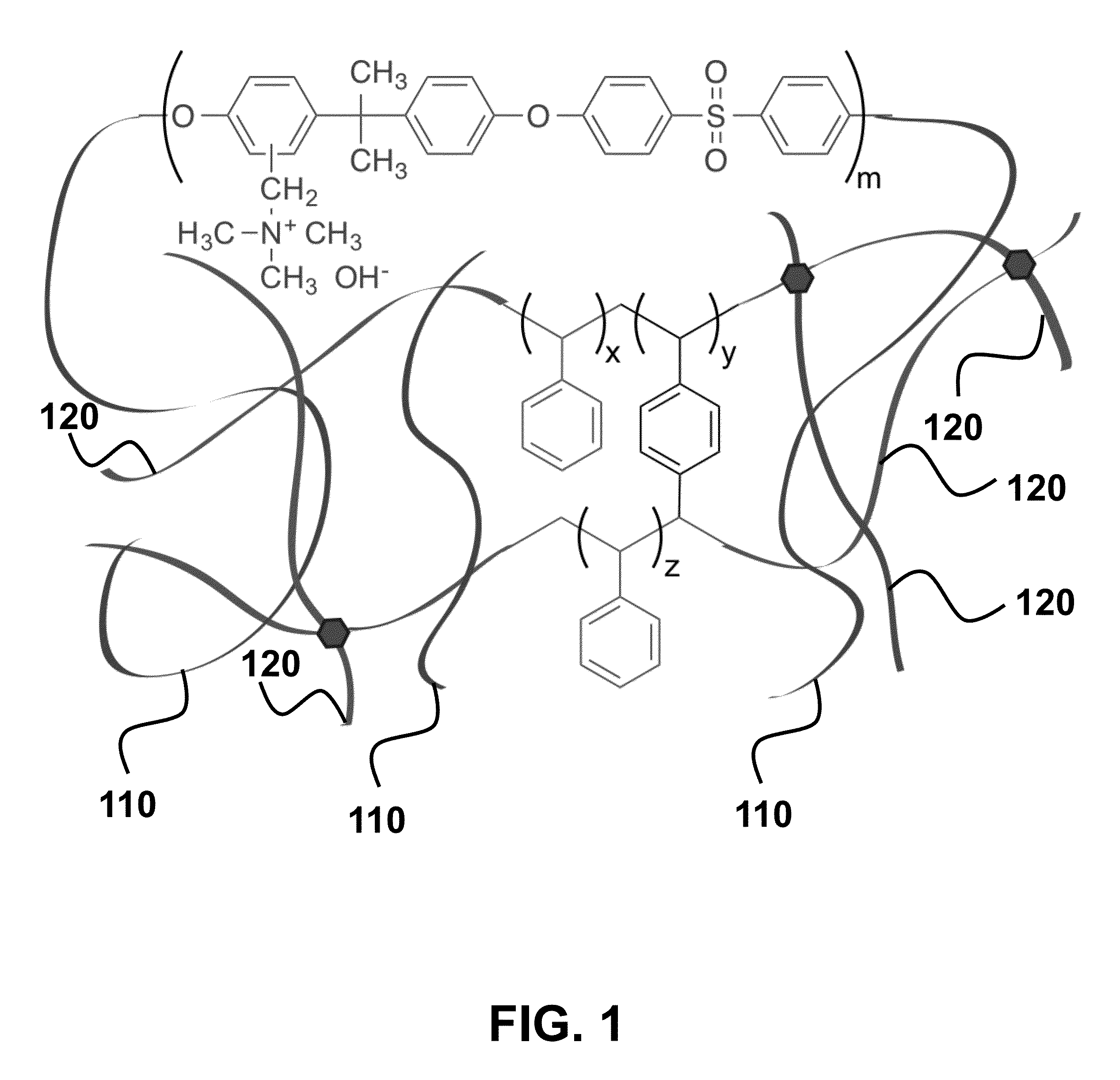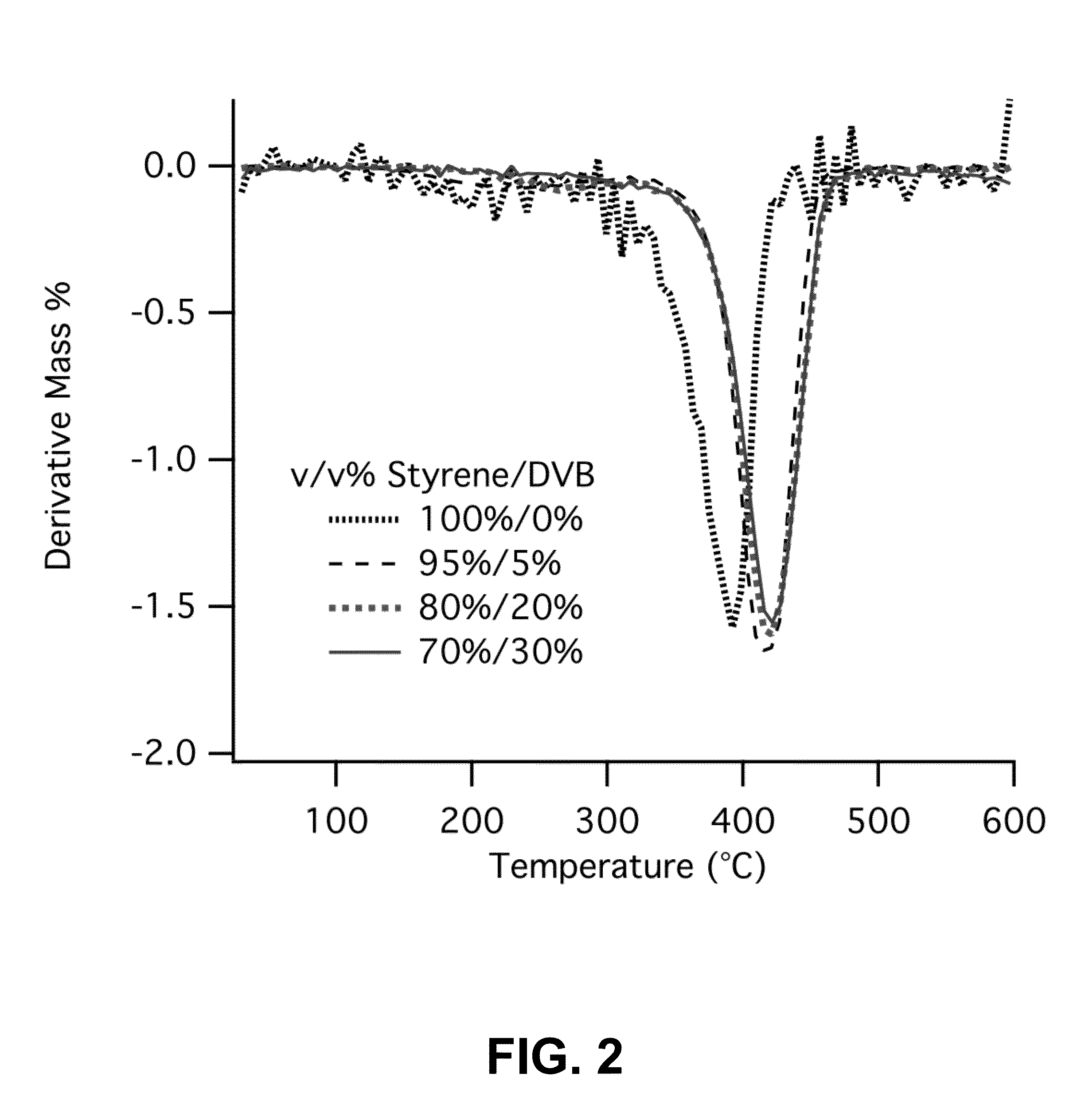Semi-Interpenetrating Network Method for Dimensionally Stabilizing Highly Charged Polyelectrolyte Membranes
a polyelectrolyte membrane, highly charged technology, applied in the direction of ion-exchangers, chemistry apparatus and processes, electrochemical generators, etc., can solve the problems of reducing dimensional stability, excessive water uptake and swelling, and extremely fragile materials that become unsuitable for commercial use, so as to achieve dimensional stability lowering, high performance, and high performance
- Summary
- Abstract
- Description
- Claims
- Application Information
AI Technical Summary
Benefits of technology
Problems solved by technology
Method used
Image
Examples
Embodiment Construction
[0030]In this invention, we describe the ability to significantly reduce water swelling and enhance the mechanical strength of highly charged anion exchange membranes by reinforcing the linear polyelectrolyte chains with a cross-linked matrix of a robust hydrophobic material, poly(styrene-co-divinylbenzene), essentially creating a semi-interpenetrating network (semi-IPN). A semi-IPN is defined as a system in which a linear polymer is homogeneously dispersed (at least on the length-scale of the polymer chains) within a covalently cross-linked polymer network; semi-IPNs have been reported previously in the fuel cell literature for enhancing the methanol resistance of Nafion and other PEMs.
[0031]The approach we provide here is applicable to a variety of anion exchange membranes, provided that the polyelectrolyte backbone has suitable compatibility with styrene and divinylbenzene. Specifically, we chose benzyltrimethylammonium polysulfone (QA PSf) as a benchmark material due to its ubiq...
PUM
| Property | Measurement | Unit |
|---|---|---|
| Volume | aaaaa | aaaaa |
| Volume | aaaaa | aaaaa |
| Volume | aaaaa | aaaaa |
Abstract
Description
Claims
Application Information
 Login to View More
Login to View More - R&D
- Intellectual Property
- Life Sciences
- Materials
- Tech Scout
- Unparalleled Data Quality
- Higher Quality Content
- 60% Fewer Hallucinations
Browse by: Latest US Patents, China's latest patents, Technical Efficacy Thesaurus, Application Domain, Technology Topic, Popular Technical Reports.
© 2025 PatSnap. All rights reserved.Legal|Privacy policy|Modern Slavery Act Transparency Statement|Sitemap|About US| Contact US: help@patsnap.com



